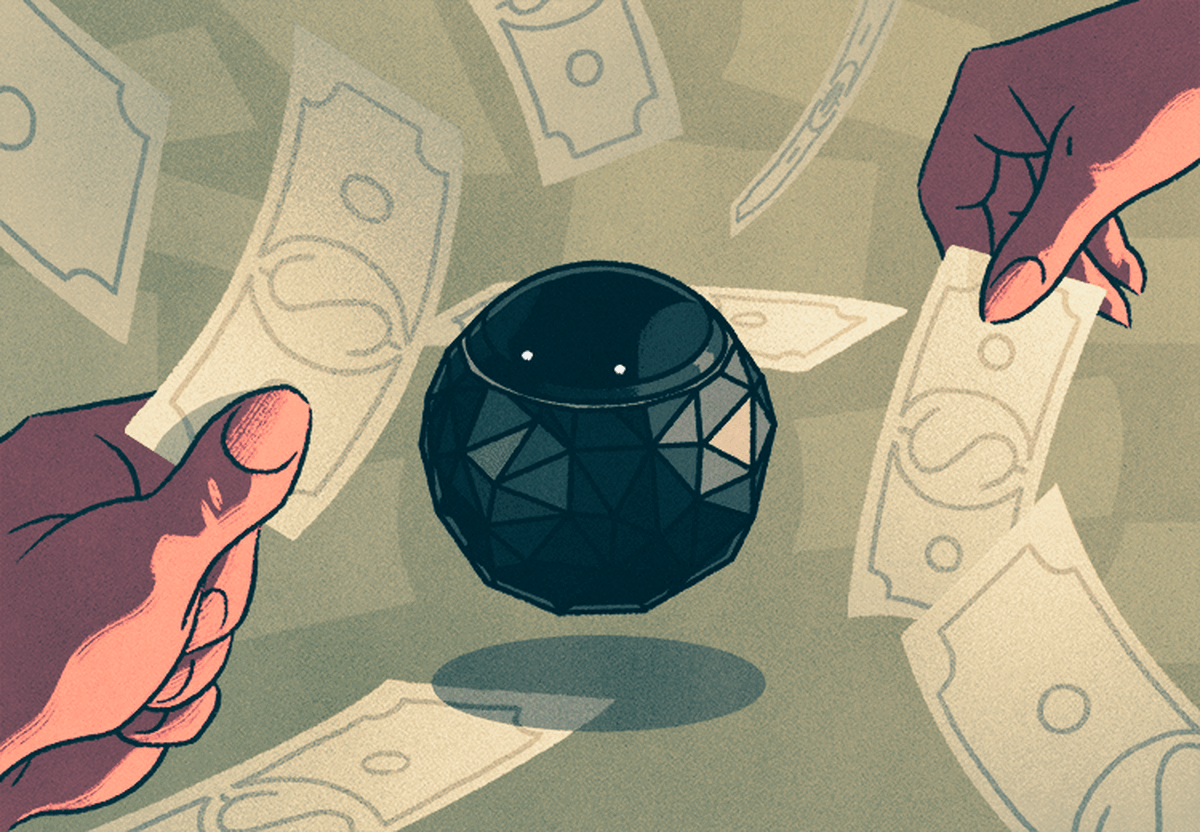Finance & Accounting Oct 4, 2017
Investors’ Fear of Missing Out on Disruptive Technology Leads to Overvalued Stocks
“Think of it like health insurance” for your portfolio.

Michael Meier
Is Tesla the next Amazon?
Stock market investors would love a crystal ball that supplies the answer. After all, Amazon ended up utterly dominating the nascent e-commerce business it helped define, reducing its competitors to dot-com punch lines, bankruptcy, or both.
Today, Tesla is trying to do the same thing for electric and self-driving cars. But there’s no way to tell if Elon Musk’s startup will be the Amazon of its domain, or the Pets.com (remember them?). Still, that has not stopped investors from paying extremely high prices—some would say irrationally high prices—for a stake in the firm.
This sort of seemingly irrational investor behavior does not just apply to modern high-tech companies.
“One of the most enduring puzzles in finance is this fact that so-called ‘growth stocks’ are typically overvalued relative to some measure of fundamentals, and have very low returns,” says Dimitris Papanikolaou, an associate professor of finance at the Kellogg School. “This pattern has being ongoing for about a hundred years—as far back as we have stock market data.”
The question is: Why?
“If people have this fear of missing out or being left behind, they will view investing in something like Tesla as a way of hedging against future disruptions and inequality,”
According to Papanikolaou, economists have traditionally chalked up this phenomenon—known as “the value premium puzzle”—to inefficiency and irrationality in the marketplace: “people are just consistently making mistakes, and that’s all there is to it.”
But a century is a long time for investors to not learn their lesson. What if their tendency to “overprice” growth stocks was actually a rational response to some other factor—like the unpredictable effects of technological innovation?
How Creative Destruction Spurs Overvalued Stocks
With collaborators Leonid Kogan at MIT and Noah Stoffman at Indiana University, Papanikolaou set out to create an economic model that could explain the value premium puzzle by accounting for the disruptive effects of innovation, which he refers to as “creative destruction.
When a new game-changing technology—for example, high-speed household Internet service—appears on the economic scene, some companies benefit much more in the short term than others, which may end up, essentially, destroyed.
Take Netflix versus Blockbuster.
“Netflix takes advantage of faster Internet and then Blockbuster is not worth as much anymore, because who wants to go to the store to rent a movie when it’s freezing out?” Papanikolaou explains. “So in relative terms, the improvement in technology benefited Netflix much more than Blockbuster.”
And while it seems hard to remember this, once upon a time we did not instinctively know that Blockbuster would be the loser in that race.
Creative destruction, with its unpredictable winners and losers, not only has the potential to redefine entire industries—it can also generate extremely outsized windfalls for the winners, while the losers get left out.
As an example, Papanikolaou uses self-driving cars: a potentially world-changing innovation if there ever were one.
“Right now we don’t know who’s going to perfect the self-driving car and eventually bring it to market; it could be Tesla, or it might be some other company,” he says. “But whoever it is, the financial benefits from that innovation are going to go disproportionately to the Elon Musks of the world. Because otherwise, they wouldn’t have bothered to put any effort into perfecting the cars in the first place.”
So investors know that the “winning” innovator will make a fortune, as will the investors who were smart or lucky enough to pick that innovator’s company. Those who did not bet on the right company will lose out on that windfall—a fate investors want to avoid.
Understanding Seemingly Irrational Investor Behavior
These unpredictable industry effects and massive potential income disparities create a powerful incentive for investors to protect themselves against being left behind.
“If people have this fear of missing out or being left behind, they will view investing in something like Tesla as a way of hedging against future disruptions and inequality,” he explains. After all, in the face of the uncertainties wrought by self-driving car technology, isn’t it smarter to overpay now for Tesla stock as part of a portfolio of other potential self-driving-car stocks, than to sit on your hands and lose big later?
“Think of it like health insurance,” Papanikolaou explains. “The average person is ‘overpaying’ in the sense that, if you added up all the payments you make to the insurance company versus all the medical claims over your lifetime, you’re most likely losing money. But you’re still happy to do it—just in case something unpredictable happens, so you don’t get stuck with a hospital bill for a couple hundred thousand dollars.”
Unlocking the Value Premium Puzzle
A novel part of Papanikolaou’s model, he says, is the assumption that, while innovation is usually a net economic positive, it does not shower benefits onto all participants in the economy equally. Most economic models, he says, do not really take into account the disparate impacts of a disruptive technology on firms and individual investors.
“Innovation will displace or replace or disrupt something that’s already here. This is in contrast to the more traditional way of modeling it, which is very uniform—you have bunch of capital and you have a bunch of workers and this magic ‘innovation’ happens and then suddenly everything is more productive.”
The researchers built their model with three main assumptions—that technological innovation benefits some firms and disadvantages others; that the lion’s share of benefits accrues to insiders at the innovating firms (as opposed to shareholders); and that investors are motivated to hedge against future income inequality.
Then they compared the model’s output with real economic data from the past century, which included average GDP growth, ratios of investment to output, and differences in profitability and rates of innovation across firms.
The verdict? “The output of the model looks reasonable,” he says, “which implies that our explanation is plausible, too”.
Takeaways for Investors
Papanikolaou cautions that this model of creative destruction is not a bulletproof “grand unified theory” for how technological innovation affects industries, or how the gains from those innovations are massively asymmetrical among investors.
But he says the results have useful implications for investors and households as technological innovation accelerates.
For example, investing in mutual funds in order to beat the stock market “might not be the right benchmark,” he says. “What that means, technically speaking, is that you’ll mostly be investing in value stocks and under-weighting growth stocks. So yes, it’s maybe true that you’re beating the market, but it isn’t free money. It bears a cost”—the cost of missing out on the next Amazon.
Paying hundreds of dollars per share for Tesla is costly, too. But the peace of mind it provides investors as part of an insurance policy against creative destruction may be worth it in the end. And it may have been fueling market behavior for the past century.



